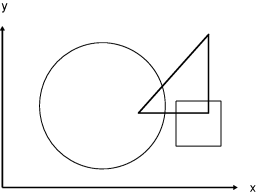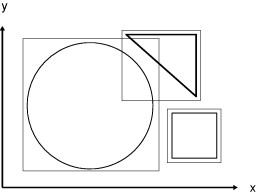The Overlap function
The Overlap function returns a Boolean value that indicates whether two objects overlap or have at least one point in common.

Overlap (UDT, UDT) RETURNS BOOLEANUDT refers to user-defined type, or the data type you want to index with the R-tree access method.
The Overlap function returns TRUE if
the object in the first parameter overlaps or intersects the object
in the second parameter and FALSE otherwise.
When you design the Overlaps function, you might want to first test if the bounding boxes of the two data objects overlap; and if they do, then test if the data objects overlap. The first test is a relatively quick and easy calculation and might eliminate many candidates before the second, more complicated test.

Shapes3 sample DataBlade module contains sample C code to create an Overlap function that takes the MyShape data type as its two parameters.